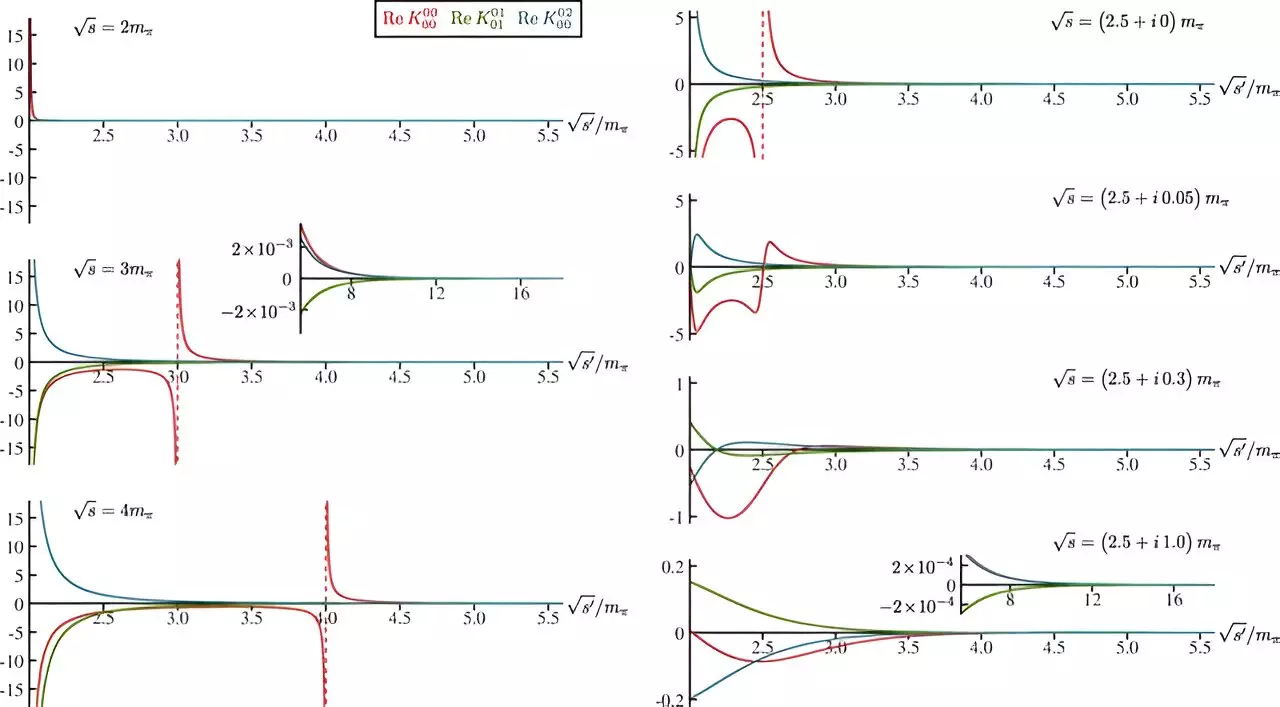Nuclear physics stands at the frontier of understanding the forces that constitute matter. Among these forces, the strong interaction is the most critical, binding together quarks to form protons, neutrons, and other particles. Yet, despite substantial advancements, many aspects of this fundamental force remain enigmatic. Recent research conducted by a dedicated team at the U.S. Department of Energy’s Thomas Jefferson National Accelerator Facility has uncovered promising insights into a pivotal yet elusive component of this intricate picture: the sigma meson. This research not only pushes the boundaries of our knowledge but also highlights the importance of using innovative approaches to explore the sometimes unfathomable depths of particle physics.
The Sigma Meson: An Enigma in Particle Physics
The sigma meson is a fascinating particle primarily composed of quarks, much like its more recognizable counterparts, the proton and neutron. However, what sets it apart is its brief existence. Born from the collision of pions—particles that themselves consist of quarks—the sigma meson is notably unstable and decays back into pions within a mere fraction of a second. This rapid decay presents significant challenges for experimental scientists striving to study its properties. As Jozef Dudek, one of the lead researchers in the study, aptly noted, the sigma is a “long-standing weird guy” in the realm of particle physics, necessitating more sophisticated techniques for its exploration.
Notably, the sigma meson’s mass is half that of the proton, rendering it the lightest unstable particle involved in the strong interaction. The pressing inquiry that guides scientists, as articulated by Arkaitz Rodas Bilbao, another key contributor to this research, revolves around understanding what binds the particles that constitute our very being. Questions such as “How do particles stick together, and what is truly happening at the fundamental level?” remain crucial for unraveling the fabric of the universe.
A Revolutionary Approach Utilizing Supercomputing
The research team, comprising Dudek, Rodas Bilbao, and Robert Edwards, recognized the limitations of traditional methods in identifying and characterizing the sigma meson. Instead, they turned to the power of supercomputing, a transformative tool that allows scientists to conduct complex calculations in a fraction of the time it would take with conventional computing systems. By harnessing the capabilities of these high-performance computing facilities, the team simulated pion-pion reactions pivotal to understanding the sigma meson.
In their innovative approach, the team relied on quantum chromodynamics (QCD)—the theoretical foundation that describes the interactions governing quarks and gluons. Conclusively, QCD is notably challenging to resolve analytically, but the integration of mathematical techniques such as “dispersion relations” offered a new pathway to illuminate the sigma’s properties. The collaboration and diverse skill sets of the team members proved instrumental in overcoming the significant technical obstacles involved in this groundbreaking work.
Breaking New Ground within Collaborative Frameworks
The collaborative ethos among the researchers stands as a testament to the evolving landscape of scientific inquiry. Within the framework of the Hadron Spectrum Collaboration (HadSpec) and the Exotic Hadron (ExoHad) Topical Collaboration, they exemplified how interdisciplinary partnerships can catalyze breakthroughs that individually would be insurmountable. Dudek emphasized the collective strength in combining specialized expertise to tackle a problem that has perplexed the scientific community for decades.
This collaborative spirit is vital not just in exploring the sigma meson but also in expanding our understanding of other exotic particles, such as the kappa meson. By establishing this foundational research, the team has set the stage for further inquiries that delve deeper into the complexities of particle interactions and the nature of matter.
Challenges Ahead: Precision and Accuracy in Research
Despite these promising advancements, the research team acknowledges the limitations of their current methodology. For instance, while the calculations provided valuable insight, they utilize quark masses that diverge from their actual values. As the scientists pursue progressively intricate calculations to decode the sigma meson’s internal structure, it becomes critical to align these values more closely with empirical data. As Dudek pointed out, consistent refinement of parameters is essential for ensuring the accuracy of future experiments that will rely on this theoretical groundwork.
From their findings at Jefferson Lab, it’s clear that the interdependence of theory and experimental work is profound. Each theoretical insight informs experimental designs, particularly those involving pions, demonstrating how foundational research contributes to the broader tapestry of nuclear physics experimentation.
In a field where inquiry is intellectually rigorous and sometimes shrouded in mystery, advancements like those achieved in this study not only enrich our understanding of the universe but also inspire future generations of physicists. The exploration into the sigma meson is a vital piece in the puzzle that shapes our existence, and the passion and dedication of researchers shine brightly in efforts to unveil its secrets.


Leave a Reply